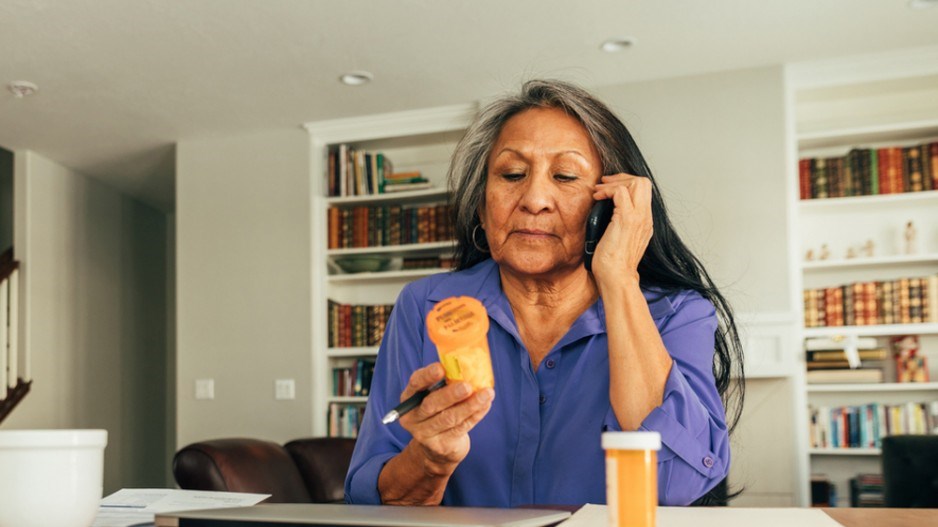Canadians are one of the healthiest populations in the world, but that doesn’t mean every Canadian has equal access to health care, nor does it mean that every Canadian has similar health outcomes.
It will come as no surprise to learn that people who live longer and who are in better health tend to have access to education, good jobs, nutritious food, and decent housing, whereas people at the other end of the spectrum are twice as likely to have a serious illness and pass away prematurely.
Socio-economic status, Indigenous identity, gender, and geographic location are the most important factors associated with health disparities in this country, impacting life expectancy, the number of healthy years a person will live as an adult, whether one experiences mental health or addiction issues, and the prevalence of chronic diseases like diabetes.
Everyone has an equal right to be healthy
These days, we’re hearing a lot about diversity, equity and inclusion. But what isn’t on the radar is the concept of health equity, which states that everyone has a fair and just opportunity to be as healthy as possible—no matter who they are or where they live.
The World Health Organization states that promoting health equity requires improving the living conditions that keep us healthy—and the social, economic, and health systems that support us when we get sick. It involves the fair distribution of resources needed for health and addresses health inequities that are unfair, or unjust and modifiable.
For example, according to Diabetes Canada, 10 per cent of Canadians have diabetes. This is expected to increase by 20 per cent over the next ten years—with a direct cost of almost $5 billion to our health care system. However, the prevalence of diabetes is more than two times higher among adults who have not completed high school, have the lowest income, or are permanently unable to work, and three times the rate in First Nations communities. “Imagine the difference we could make if we addressed these inequities,” says Heidi Worthington, Senior Vice-President, Pacific Blue Cross.
“We are trying to incorporate this concept into our business, along with diversity, equity, and inclusion.”
Health equity for Indigenous people
Canada’s Indigenous populations bear the brunt of health inequities in this country. Since 2013, First Nations Health Authority (FNHA) has been providing health and wellness programs and services to over 147,000 First Nations people from over 200 different communities across British Columbia. They are working to transform how health care is delivered to their clients and improve overall health outcomes.
Pacific Blue Cross partnered with FNHA on dental, vision, and medical supplies and equipment benefits coverage. They’re helping FNHA to significantly improve access to health care providers for their clients.
Health equity for women
Work done by the BC Women’s Health Foundation (BCWHF) shows that women still face many barriers to high-quality health care. These inequities vary greatly within the female population; as you would expect, socio-economic factors can worsen them for women with low incomes, in rural areas, and for Indigenous and new immigrant women.
Women are often disadvantaged in other ways. They have different physiology than men, yet they’re often treated the same. Traditionally, health and safety equipment is not designed with the female physiology in mind, which can create health risks and injuries. Women also often balance full time work with caring for children and aging parents. Having flexible access to care, when women and their families need it, is available with virtual care yet only to a select few. There is not enough focus on women’s reproductive health and how they experience menstruation, a pregnancy or menopause. Research funding for women’s health remains well below population norms.
Pacific Blue Cross partnered with the BCWHF almost three years ago to help create awareness of some of these gaps. You can read the two reports they published—In Her Words: Women’s Experience with the Healthcare System in BC and Unmasking Gender Inequity—on either of their websites.
Making a difference
Pacific Blue Cross boosted coverage for psychology and physiotherapy benefits for expecting new parents in addition to HPV vaccinations and fertility drugs to augment women’s health care in their small business plans.
Plus, they continue to help improve the health and wellbeing of those served by the Ministry of Social Development and Poverty Reduction. And they are the founding sponsor of the United Way BC-Lower Mainland’s Period Promise campaign, which has been raising awareness and funds to ensure everyone who menstruates has access to the products they need.
A journey that’s worth taking
“We all benefit from a health equity approach—it improves both overall health and economic prosperity and helps shift health care costs from expensive medical interventions for acute and chronic disease to more preventative programs and practices,” says John Crawford, President & CEO, Pacific Blue Cross. “All B.C. employers have some role to play in addressing health equity in our population, so let’s understand it and take action.”




